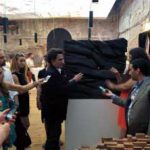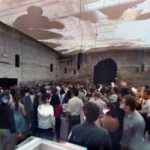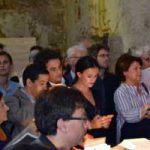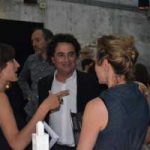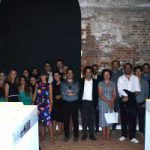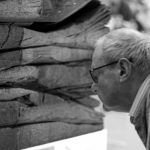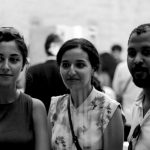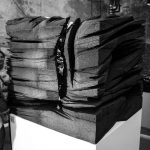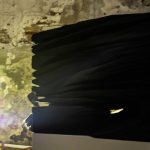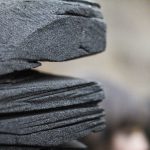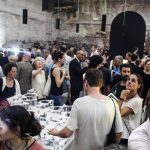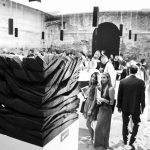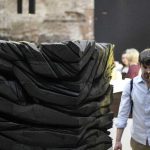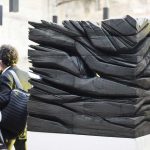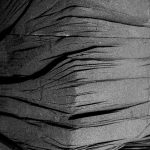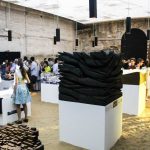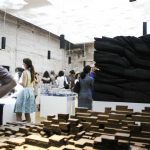Bienal de Arquitectura de Venecia – Pabellón de Marruecos – Hatching por Menis Arquitectos
14th International Architecture Exhibition of the Venice Biennale
The Biennale Architettura 2014 is the most important event of the international architecture scene. Over the course of six months, thousands of professionals – journalists, heads of institutions, public and private clients – participate in exhibitions, conferences, symposiums, and evening events. The 14th edition of the International Architecture Exhibition – la Biennale di Venezia will be curated by Rem Koolhaas. A recipient of the Pritzker Architecture Prize in 2000 and one of the most influential architects of his generation, Rem Koolhaas has chosen to make the next Biennale an event about architecture rather than about architects. By proposing the theme “Fundamentals 1914-2014”, he invites viewers to take a fresh look at the fundamentals of how our profession is practiced. By recounting the cumulative and collective history of the past century, the national pavilion exhibitions will present a vision of the evolution of architecture as a scholarly and cultural practice, between globalization and the impulse to preserve specific identities.
THE PAVILLON OF MOROCCO: FUNDAMENTAL(ISM)S
Entitled “Fundamental(ism)s” in an allusion to the general theme proposed by Rem Koolhaas, the Pavilion of Morocco explores the radical and experimental approaches inspired by the region. In addition to having welcomed the work of international architects, Morocco has above all been a land of exploration, a veritable laboratory for the modern project. Morocco encouraged unique architectural experiments (constructive and material, formal and architectonic, but also domestic and social) that tangibly contributed to the history of architecture. While the country’s very specific historical conditions fostered this development, the Moroccan genius has also consisted in the ability to absorb, digest, and ultimately metabolize the modern project. Perhaps this, too, is part of the Moroccan tradition — a tradition of modernity and radicality, but also of appropriation and integration.
The tension between the greater history of Morocco’s architecture and its contemporary output highlights a form of fluidity and continuity that is unique and specific to Morocco. The acclimation of architecture and of the modern project occurred very early on. Quite quickly (beginning in the 1910s), the architectural scene abandoned attempts to adapt the architectural and urban models of the metropolis in favor of inventing new urban and architectural typologies. This desire for integration was born of a fascination for the existing architectural and urban tradition as well as a powerful and collective sense of taking part in a great adventure. To narrate this adventure, the Pavilion of Morocco proposes an exhibition that focuses on the fundamental question of habitation and juxtaposes a historical trajectory of urban housing with Contemporary speculations on inhabitable structures in the desert.
INHABITING THE DESERT
Absent from the architectural discourse in Morocco, the Sahara, with its extreme geography and harsh climactic conditions, remains an unexplored territory for architectural speculation. Reintegrated into the national territory in 1975, the Sahara remains a far-flung, contested area in the eyes of the rest of the world. The unique geography of the Moroccan Sahara and its position as a territory at the “limits”, in a climactic, social, and political sense, demands that architects question how to integrate architectural and infrastructural solutions into such a marginalized territory. In addition to inviting six architects to participate in the pavilion, FADA launched an open competition in Morocco to encourage new talents to emerge. The two co-winners of this competition will also participate in this year’s exhibition.
Hatching by Menis Arquitectos
Molding Nature to Make Life Possible
Symbiosis between the natural energy and the manipulation of the form Hatching is a machine that produces life through:
- Catching the trade winds at great altitudes
- Water condensation from the clouds
- Protection from the warm winds in the lower parts
- Protection from the sun
- Creating interior freshness
Throughout these elements, a microclimate that makes life possible is generated. Read More
Inauguration of Moroccan Pavilion in the Venice Biennial of Architecture
Photos by Mauricio Sauma

 Español
Español



